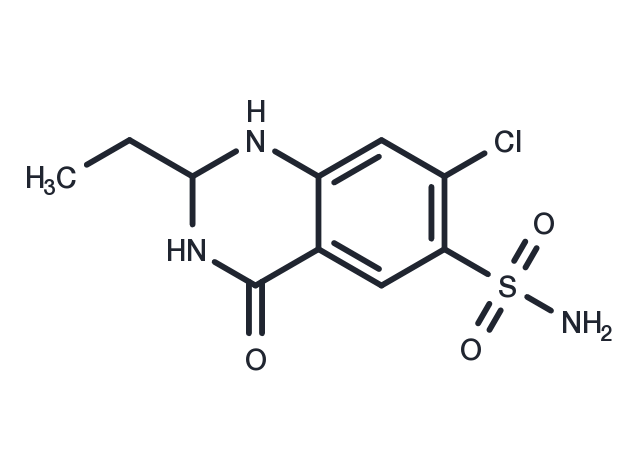Powder: -20°C for 3 years | In solvent: -80°C for 1 year


Quinethazone is a thiazide diuretic used to treat hypertension. Common side effects include dizziness, dry mouth, nausea, and low potassium levels.

| Pack Size | Availability | Price/USD | Quantity |
|---|---|---|---|
| 25 mg | 6-8 weeks | $ 1,520.00 | |
| 50 mg | 6-8 weeks | $ 1,980.00 | |
| 100 mg | 6-8 weeks | $ 2,500.00 |
| Description | Quinethazone is a thiazide diuretic used to treat hypertension. Common side effects include dizziness, dry mouth, nausea, and low potassium levels. |
| Synonyms | Quinethazon, Hydromox, Aquamox, Quinethazonum, Chinethazonum |
| Molecular Weight | 289.74 |
| Formula | C10H12ClN3O3S |
| CAS No. | 73-49-4 |
Powder: -20°C for 3 years | In solvent: -80°C for 1 year
You can also refer to dose conversion for different animals. More
bottom
Please see Inhibitor Handling Instructions for more frequently ask questions. Topics include: how to prepare stock solutions, how to store products, and cautions on cell-based assays & animal experiments, etc.
Quinethazone 73-49-4 Quinethazon Hydromox Aquamox Quinethazonum Chinethazonum inhibitor inhibit
